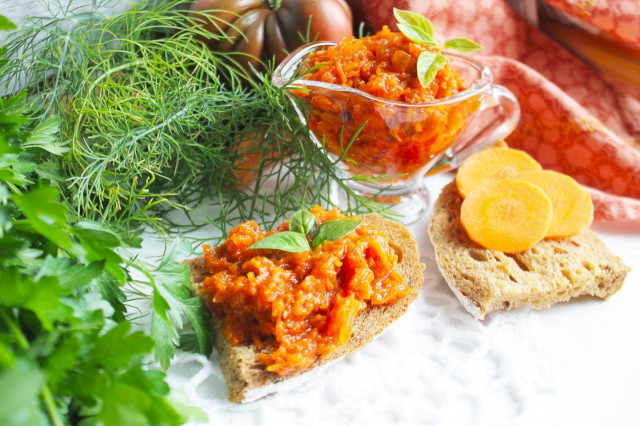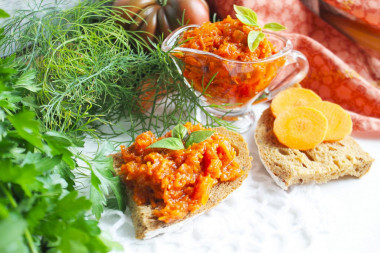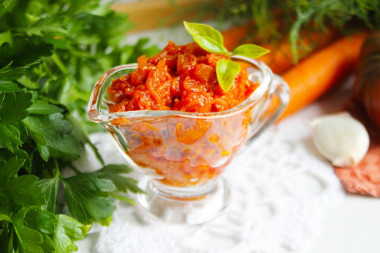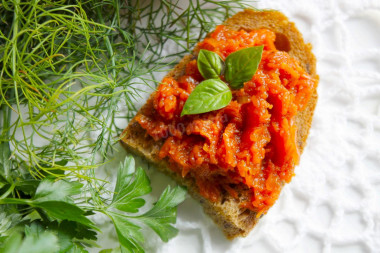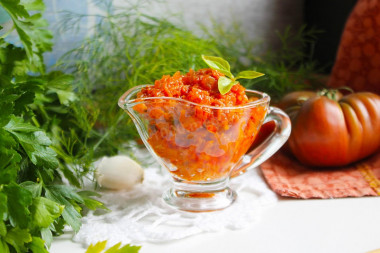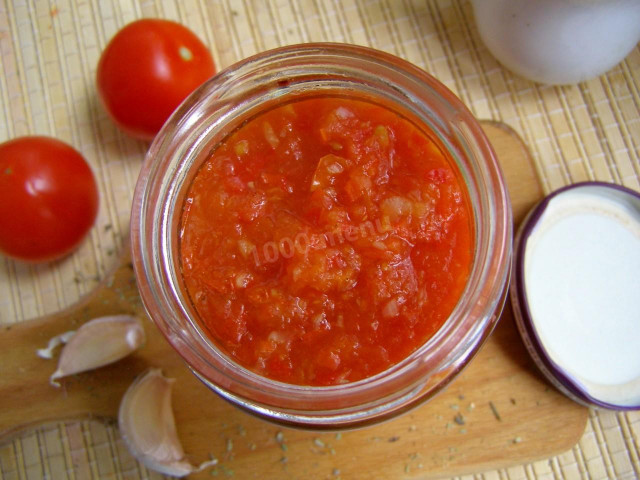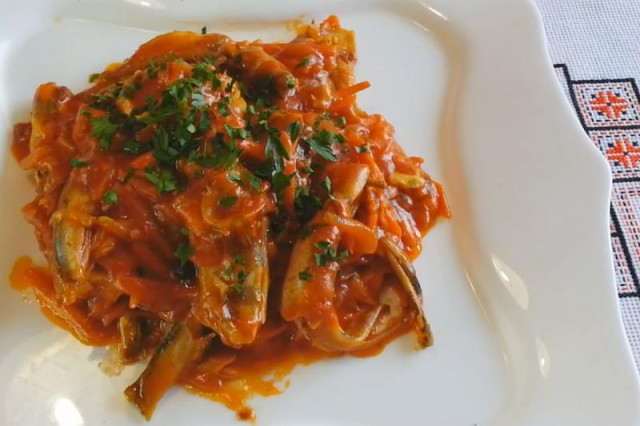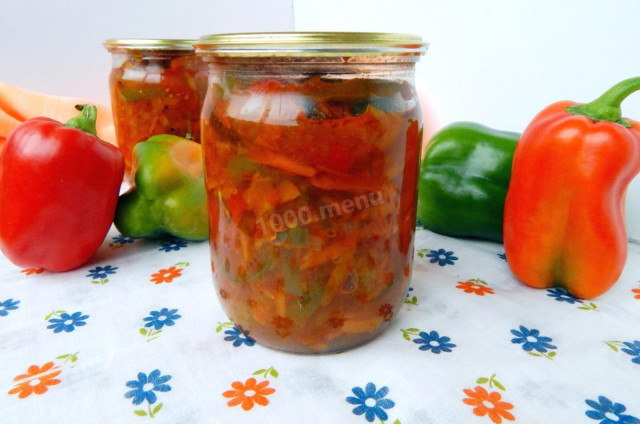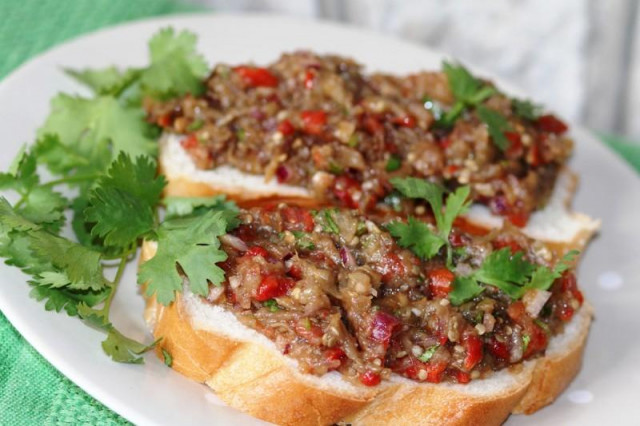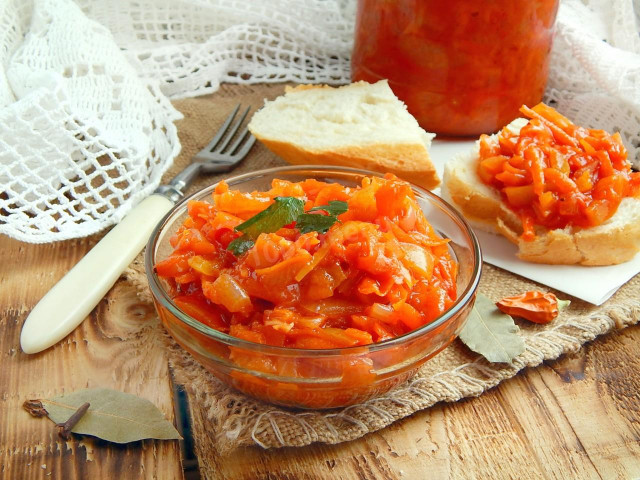Composition / ingredients
Step-by-step cooking
Step 1:
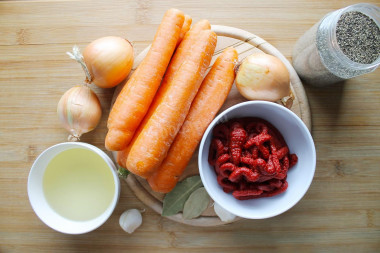
How to make caviar from carrots? First of all, prepare all the necessary components.
Step 2:
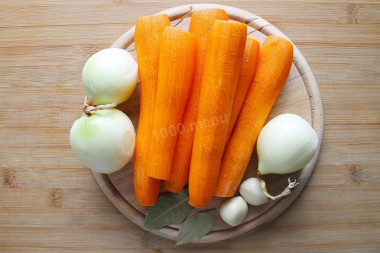
Peel carrots, onions, garlic and wash in clean water.
Step 3:
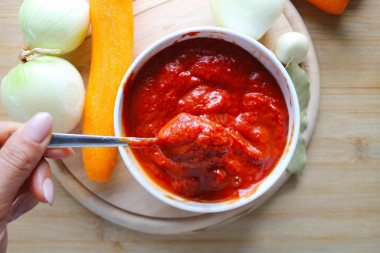
Dilute tomato paste with drinking water to a state of low-fat sour cream. It took me about 150 milliliters of water for 200 grams of pasta. Stir until smooth.
Step 4:
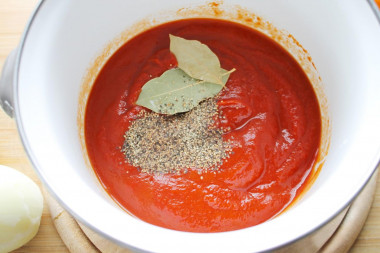
Put the pasta in a small saucepan, add the washed bay leaf and allspice.
Step 5:
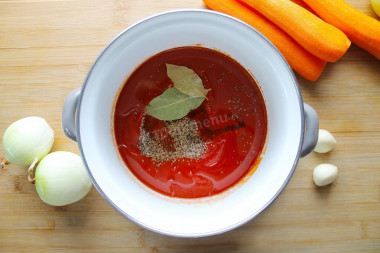
Pour in a little more than half of the vegetable oil, leave the rest for frying carrots.
Step 6:
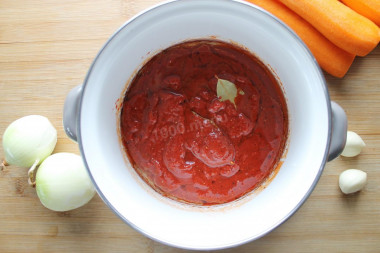
Mix everything well.
Step 7:
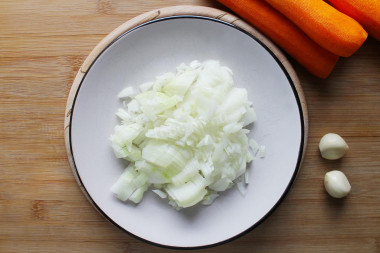
Chop the onion into small cubes.
Step 8:
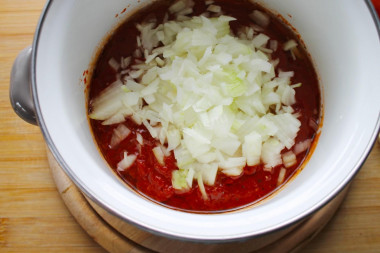
Send it to the tomato mixture.
Step 9:
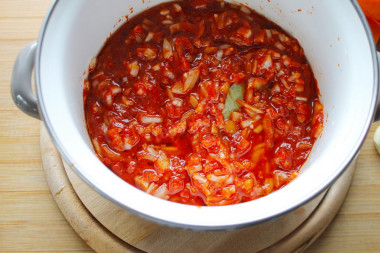
Put the pan on high heat, after the first signs of boiling appear, reduce the stove to a minimum and, stirring occasionally, simmer until the onion is soft. It will take about 20-30 minutes.
Step 10:
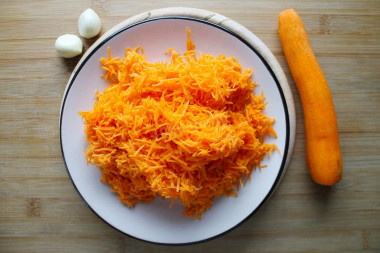
At this time, you can do carrots. Grate it on a fine grater
Step 11:
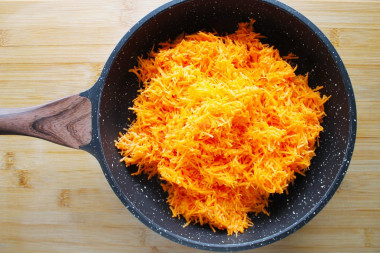
Pour the remaining vegetable oil into the pan, add the carrots and put on high heat. Fry the carrots for 4 to 5 minutes (stir occasionally so that nothing burns).
Step 12:
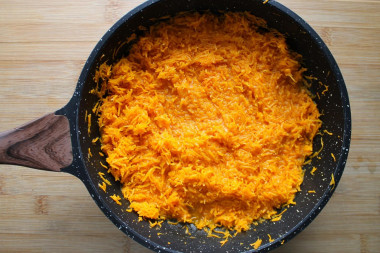
Pour in a little boiling water, stir and simmer on low heat for about 10 minutes, during which time the carrot will become soft.
Step 13:
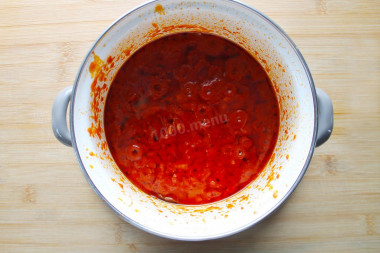
Check the tomato sauce, the liquid in it should partially evaporate and the tomato dressing will thicken slightly.
Step 14:
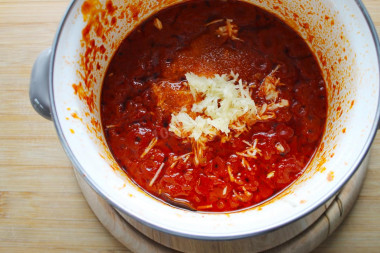
Send garlic grated on a fine grater to a saucepan, add salt to taste, mix everything well. Garlic can be excluded, the dish will not get worse from this.
Step 15:
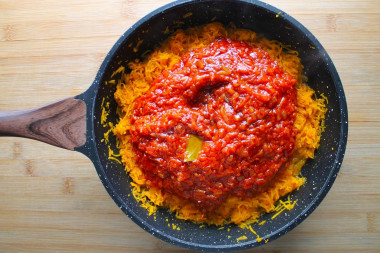
Put the tomato sauce in the pan with the carrots.
Step 16:
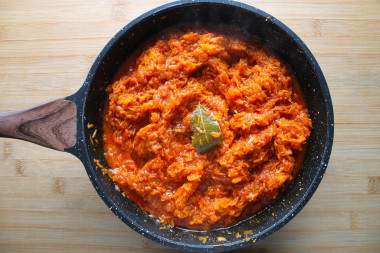
Stir and simmer all together for about five minutes. Taste the caviar and add salt, if required. Some recipes suggest adding a little sugar, I usually don't do that, the sweetness from carrots, it seems to me, is quite enough. You add sugar, if necessary, to taste.
Step 17:
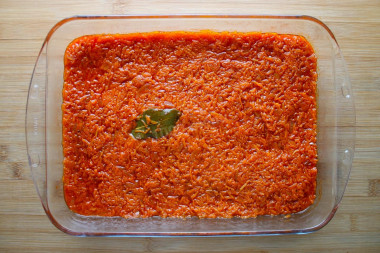
Next, there are two ways to bring the caviar to readiness. One of them is to leave the carrots in a frying pan and simmer on low heat under a closed lid for 30 minutes. I suggest another option- to finish cooking in the oven. To do this, put the caviar in an even layer in a fireproof mold, cover with foil, and send it to a preheated oven at a temperature of 140-160 degrees (top-bottom mode) and leave for half an hour.
Step 18:
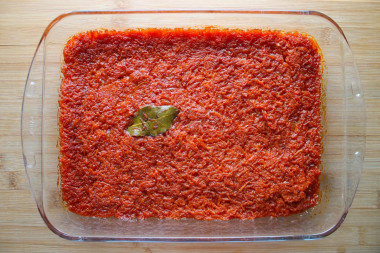
The temperature may vary depending on the capabilities of your oven. It is important (!), caviar should not be fried, but languish and reach readiness at a low temperature. This is what ready-made carrot caviar looks like.
Step 19:
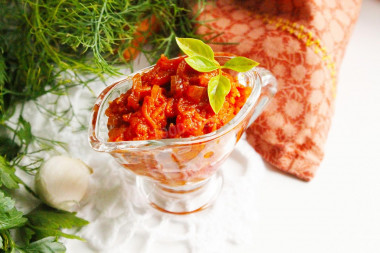
You can store such a snack in the refrigerator for up to 6-7 days.
Step 20:
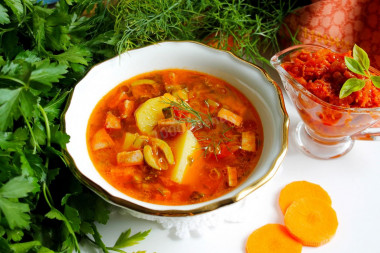
If we don't have time to eat all the caviar, I usually pack it in small food bags of 2-3 tablespoons and send it to the freezer. So it can be stored as long as possible. When you need to quickly cook a hodgepodge or other tomato soup, I add carrot caviar from freezing to the first dish at the stage when frying should be added, boil the soup for another 5-7 minutes and remove it from the heat. It turns out delicious, satisfying and rich!
Bon appetit!
Root vegetables are best washed with a brush or a hard sponge under running water.
Caloric content of the products possible in the composition of the dish
- Onion - 41 kcal/100g
- Carrots - 33 kcal/100g
- Dried carrots - 275 kcal/100g
- Boiled carrots - 25 kcal/100g
- Garlic - 143 kcal/100g
- Bay leaf - 313 kcal/100g
- Vegetable oil - 873 kcal/100g
- Tomato paste - 28 kcal/100g
- Salt - 0 kcal/100g
- Allspice - 263 kcal/100g

